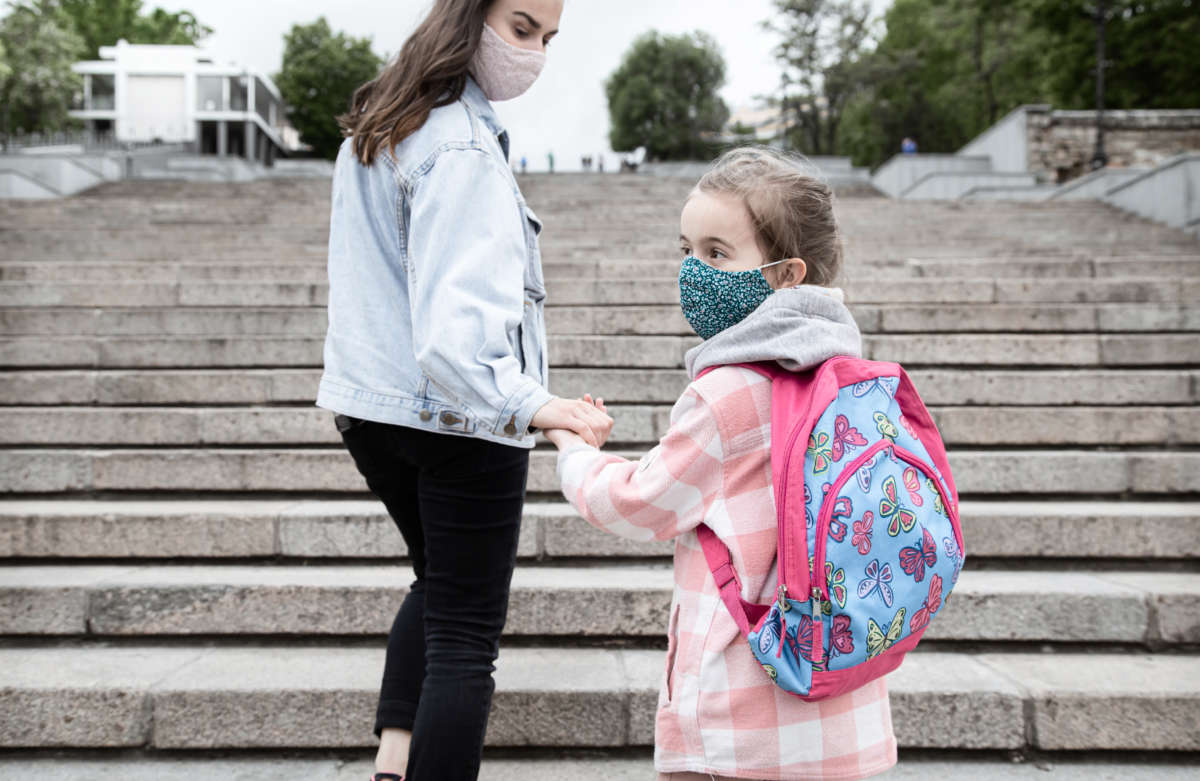As a number of schools across the United States question whether to reopen their doors at what appears to be the height of the coronavirus pandemic in the country so far, a recent poll finds that most Americans don’t want to send children back into classrooms this fall.
Polling conducted by Politico/Morning Consult earlier this week found that only 38 percent of Americans strongly support or somewhat support reopening K-12 classrooms when the academic school year begins, with 53 percent saying they strongly oppose or somewhat oppose restarting in-person learning.
Views were similar when respondents were asked about reopening college campuses. Only 40 percent said they supported institutes of higher learning reopening this fall, with 50 percent of Americans saying they were opposed to the idea.
Participants in the poll were also asked to weigh in on recent comments from President Donald Trump — namely, his threat last week to reduce federal funding for schools that determine their best course of action, in terms of keeping students and faculty health, might be to continue using distance learning.
According to the poll, that plan by Trump is opposed by 65 percent of Americans, who say schools should still receive federal funding even if they go to a remote learning environment this year. Just 22 percent of respondents said that the federal funding those schools might receive should be reduced.
Each school district across the country will have to determine for themselves what to do regarding the risks of reopening in the fall during a pandemic, but a common standard among epidemiologists is that schools that are in a community where a positive COVID-19 testing rate is greater than 5 percent should not reopen. Among the nation’s top 10 largest school districts, just two cities — Chicago and New York — appear to reach that threshold.
But that’s not the only standard being considered. Indeed, those two districts may not reopen either, although they both are still considering plans to allow some in-person instruction.
Under a plan from New York City Mayor Bill de Blasio, schools might open under a hybrid plan, with students learning in-person 1-3 days per week and doing remote learning on other days of the week. Classroom sizes would also have to shrink, to about 12 individuals (including students and teachers) per classroom.
But that plan can only go forward if schools in the city reach a measurement that’s been put in place for the rest of the state as well. New York Gov. Andrew Cuomo announced this week that schools could only reopen if their respective regions were in Phase 4 of the state’s reopening plan, which New York City hasn’t reached yet. Schools in the rest of the state also couldn’t reopen if their region didn’t have a 14-day average rate of infection that was 5 percent or lower.
Chicago Public Schools have not yet announced how they intend to work this fall. A plan of action was promised last month by Mayor Lori Lightfoot but was never announced. On July 9, Lightfoot again promised that a plan would be released soon, but with no definite date of when it might come out.
She promised, however, that public health recommendations would guide the city’s decision.
“As with everything, we’re going to be guided by the public health guidance and we need to take our time and see where we are in the arc of this virus at that point…. We plan to make an announcement relatively soon about what that might look like,” Lightfoot said.
Several other large school districts across the country have already announced they are sticking to the remote learning option. Los Angeles and San Diego schools, the two largest districts in California, won’t reopen in the fall, for example, a move that was supported by several teachers’ unions.
“We all want to physically open schools and be back with our students, but lives hang in the balance. Safety has to be the priority,” United Teachers Los Angeles President Cecily Myart-Cruz said in a statement. “We need to get this right for our communities.”
Schools in Atlanta, too, will not reopen, at least initially. Instead, they will employ distance learning for at least the first nine weeks of the academic year, and will push the start of school back to August 24 (from its previous start date of August 10), evaluating after those nine weeks are up whether reopening physical buildings might work at that time.
Miami-Dade County schools are also planning to not reopen, at least at this moment. Schools in Florida aren’t allowed to resume until their regions reach the state’s Phase 2 level of reopening. The Miami-Dade school district is only in Phase 1 at this time.
5 Days Left: All gifts to Truthout now matched!
From now until the end of the year, all donations to Truthout will be matched dollar for dollar up to $50,000! Thanks to a generous supporter, your one-time gift today will be matched immediately. As well, your monthly donation will be matched for the whole first year, doubling your impact.
We have just 5 days left to raise $50,000 and receive the full match.
This matching gift comes at a critical time. As Trump attempts to silence dissenting voices and oppositional nonprofits, reader support is our best defense against the right-wing agenda.
Help Truthout confront Trump’s fascism in 2026, and have your donation matched now!
